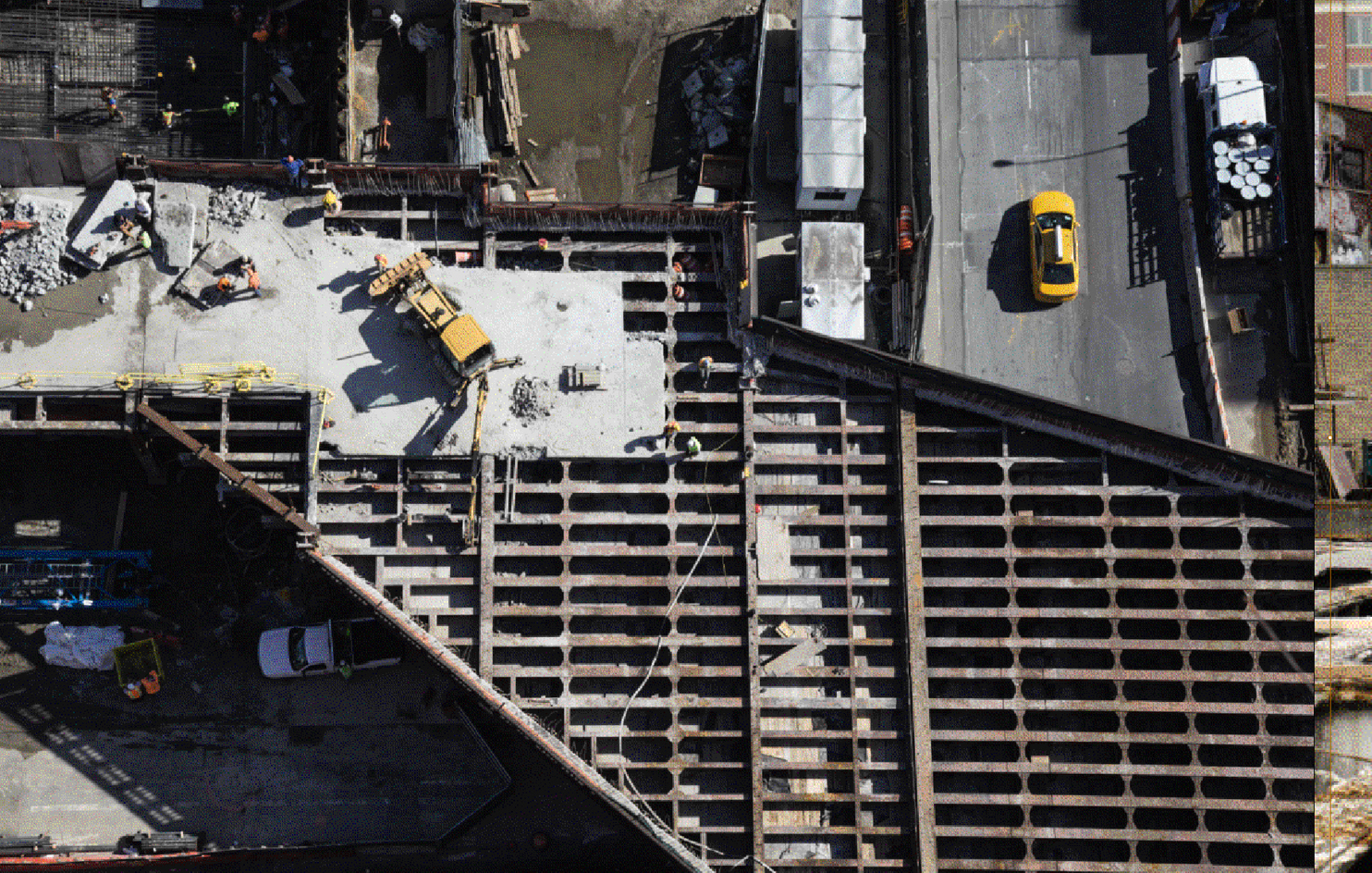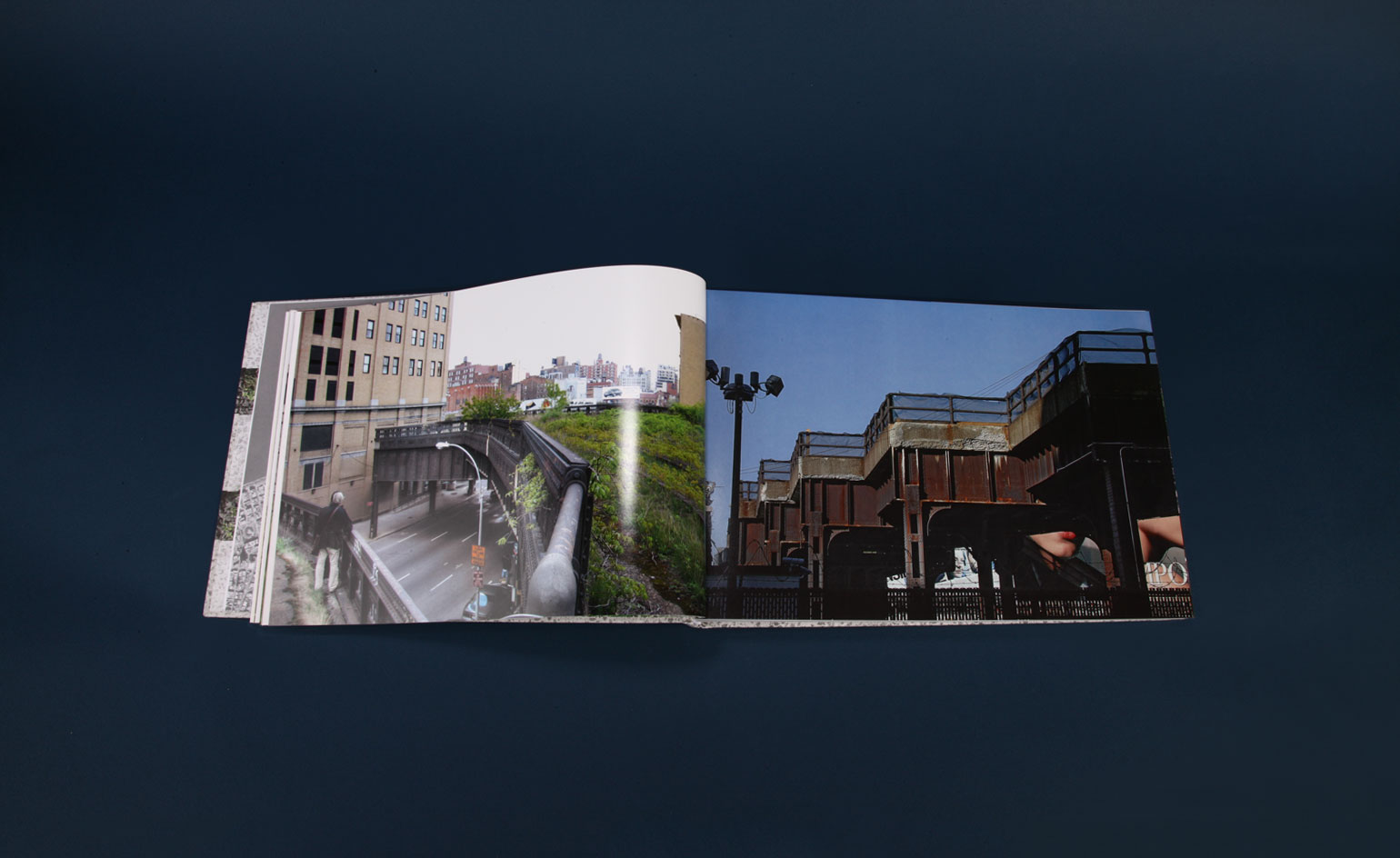High Line timeline: a monograph on Diller Scofidio + Renfro and James Corner Field Operation's masterpiece

Providing not just a blueprint for urban regeneration since its completion in 2014, the High Line is held up as the quintessential example of working with what you have. It began life as a chunk of New York's West Side Line, a 19th century freight railway, abandoned for two decades and seemingly without purpose in a city emerging from a long period of economic stagnation. In 2004, a competition was held to explore ideas for bringing the elevated section of track back to life.
The winning scheme by Diller Scofidio + Renfro and James Corner Field Operations took a decade to bring to fruition, involving a carefully devised blend of architecture and planting that sought to emphasise the wilderness quality that had sprung up amongst the graffiti and retain as much of the hefty engineering structure as possible.
The High Line has been a triumphant success and this monograph mimics the project's horizontal slash across the urban landscape, with copious fold out pages that track the path, the plants, the process, the existing site and the state of the Line today. Written by the protagonists and charting the design process from first sketches to mature planting, it's the next best thing to walking the High Line yourself.

Narrated from the perspective of designers Diller Scofidio + Renfro and James Corner Field Operations, the book is a timeline of the full design process, from 2004 to the present day

The original site preparation proceeded with structural steel and concrete repair, lead paint abatement and repainting.

Schematic design started in 2005, in a collaboration between many of the stakeholders

Construction on the conversion began in 2006, with each section of the rail track removed and tagged so that it could be returned later to its original location.

The design team developed a vision of a park, mapping out its qualitative underpinnings and conceptual framework.

Phaidon's publication contains in excess of 570 illustrations, alongside previously unpublished material such as the original design proposal and construction images

Copious fold out pages track the path, the plants, the process, the existing site and the state of the Line today...

... from first sketches to mature planting and video stills

Planting beds were installed last: once the green roof system and engineered soil were in place, tens of thousands of plants were distributed.

Pictured is the book's depiction of the Gansevoort Street to West 13th Street section, including woodlands and grasslands

The publication is the next best thing to walking the High Line yourself
INFORMATION
The High Line, £49.95, published by Phaidon. For more information, visit James Corner Field Operations’ website
Wallpaper* Newsletter
Receive our daily digest of inspiration, escapism and design stories from around the world direct to your inbox.
Jonathan Bell has written for Wallpaper* magazine since 1999, covering everything from architecture and transport design to books, tech and graphic design. He is now the magazine’s Transport and Technology Editor. Jonathan has written and edited 15 books, including Concept Car Design, 21st Century House, and The New Modern House. He is also the host of Wallpaper’s first podcast.
-
 Nikos Koulis brings a cool wearability to high jewellery
Nikos Koulis brings a cool wearability to high jewelleryNikos Koulis experiments with unusual diamond cuts and modern materials in a new collection, ‘Wish’
By Hannah Silver
-
 A Xingfa cement factory’s reimagining breathes new life into an abandoned industrial site
A Xingfa cement factory’s reimagining breathes new life into an abandoned industrial siteWe tour the Xingfa cement factory in China, where a redesign by landscape specialist SWA Group completely transforms an old industrial site into a lush park
By Daven Wu
-
 Put these emerging artists on your radar
Put these emerging artists on your radarThis crop of six new talents is poised to shake up the art world. Get to know them now
By Tianna Williams
-
 Masters of midcentury modern design and their creations spotlighted in new book
Masters of midcentury modern design and their creations spotlighted in new book‘Mid-Century Modern Designers’ is a new book from Phaidon celebrating those who shaped the period and their notable creations, from furniture to objects
By Tianna Williams
-
 Designer Danny Kaplan’s Manhattan showroom is also his apartment: the live-work space reimagined
Designer Danny Kaplan’s Manhattan showroom is also his apartment: the live-work space reimaginedDanny Kaplan’s Manhattan apartment is an extension of his new showroom, itself laid out like a home; he invites us in, including a first look at his private quarters
By Diana Budds
-
 New Superhouse show captures the rebellious spirit of Dan Friedman’s Manhattan apartment
New Superhouse show captures the rebellious spirit of Dan Friedman’s Manhattan apartmentIn the late 1970s, graphic designer and artist Dan Friedman transformed his apartment into a Day-Glo laboratory of ideas. Now, a new exhibition at Superhouse in New York revisits his vibrant, rebellious world
By Ali Morris
-
 Rooms with a view: a new book celebrates the Italian approach to interior design
Rooms with a view: a new book celebrates the Italian approach to interior designLaura May Todd's survey of Italian interiors is the perfect antidote to January gloom, taking a look inside 50 distinctive Italian homes
By Ali Morris
-
 From migrating elephants to a divisive Jaguar, was this the best Design Miami yet?
From migrating elephants to a divisive Jaguar, was this the best Design Miami yet?Here's our Design Miami 2024 review – discover the best of everything that happened at the fair as it took over the city this December
By Henrietta Thompson
-
 Design practice Astraeus Clarke is inspired by cinema to tell a story and evoke an emotion
Design practice Astraeus Clarke is inspired by cinema to tell a story and evoke an emotionIn a rapidly changing world, the route designers take to discover their calling is increasingly circuitous. Here we speak to Chelsie and Jacob Starley the creative duo behind Astraeus Clarke
By Hugo Macdonald
-
 California cool: Studio Shamshiri debuts handmade door handles and pulls
California cool: Studio Shamshiri debuts handmade door handles and pullsLos Angeles interior design firm Studio Shamshiri channels the spirit of the Californian landscape into its handcrafted hardware collections. Founder Pamela Shamshiri shares the inspiration behind the designs
By Ali Morris
-
 Is Emeco's 'No Foam KNIT' a sustainable answer to synthetic upholstery textiles?
Is Emeco's 'No Foam KNIT' a sustainable answer to synthetic upholstery textiles?'Make more with less' is Emeco's guiding light. Now, the US furniture maker's new mono-material textile, the 'No Foam KNIT', may offer a sustainable solution to upholstery materials
By Ali Morris